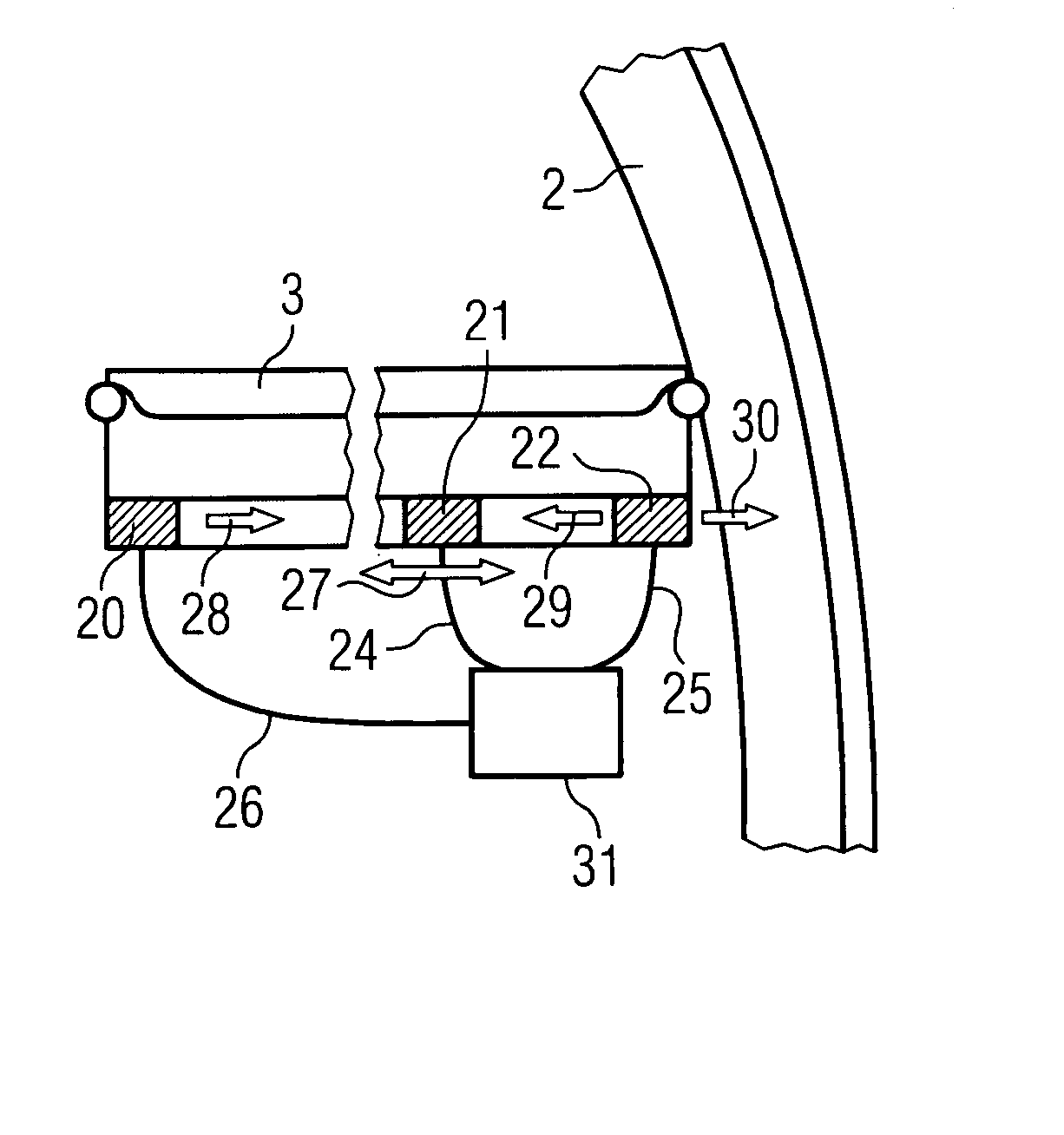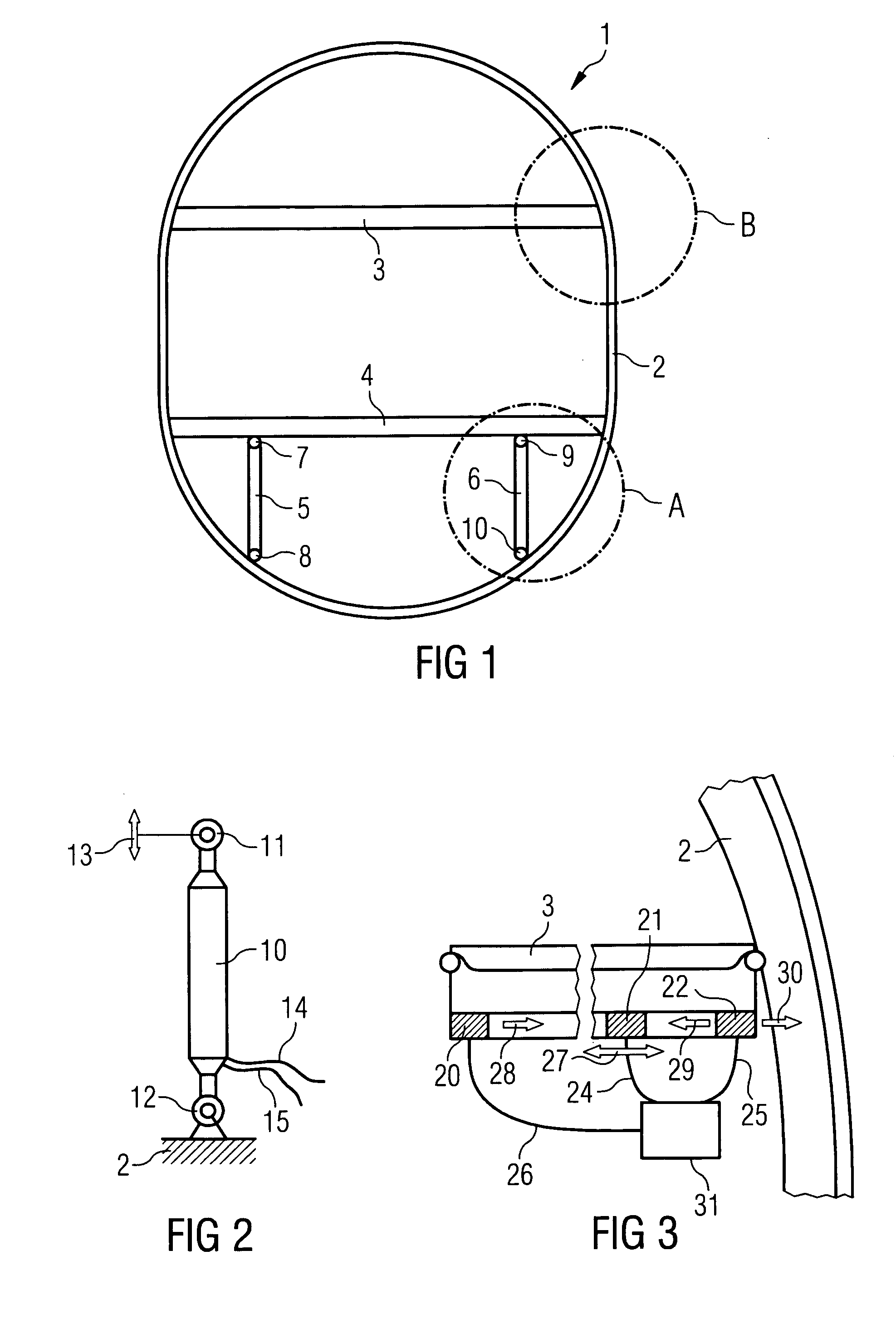Structure element for an aircraft
- Summary
- Abstract
- Description
- Claims
- Application Information
AI Technical Summary
Benefits of technology
Problems solved by technology
Method used
Image
Examples
Embodiment Construction
[0025] In the following description of the figures, the same reference characters are used for identical or similar elements.
[0026]FIG. 1 shows a diagrammatic cross-sectional representation of a fuselage. As is shown in FIG. 1 the fuselage 1 comprises an external skin 2 that is stabilised, supported and reinforced by transverse girders 3, 4 and Samer rods 5, 6. On the right-hand and left-hand sides the transverse girders 3, 4, which bear the floor structures in the fuselage, are connected to the aircraft frame (not shown in FIG. 1) by way of rivets. The Samer rods 5, 6 are used to support the transverse floor girder 4 downward on the frame. This construction is designed to achieve as stiff a floor as possible.
[0027] As a result of wind gusts or as a result of the engines, at times considerable forces are introduced into the aircraft structure, which forces can for example cause undesirable resonance oscillations or vibrations. These vibrations can at times cause significant noise ...
PUM
 Login to View More
Login to View More Abstract
Description
Claims
Application Information
 Login to View More
Login to View More - R&D
- Intellectual Property
- Life Sciences
- Materials
- Tech Scout
- Unparalleled Data Quality
- Higher Quality Content
- 60% Fewer Hallucinations
Browse by: Latest US Patents, China's latest patents, Technical Efficacy Thesaurus, Application Domain, Technology Topic, Popular Technical Reports.
© 2025 PatSnap. All rights reserved.Legal|Privacy policy|Modern Slavery Act Transparency Statement|Sitemap|About US| Contact US: help@patsnap.com


